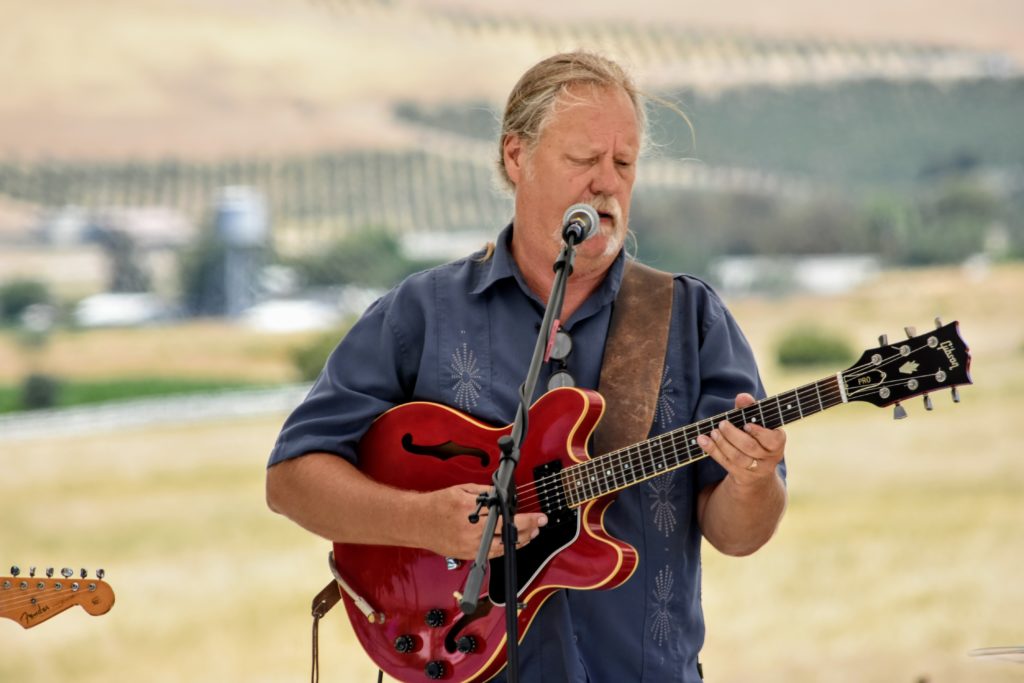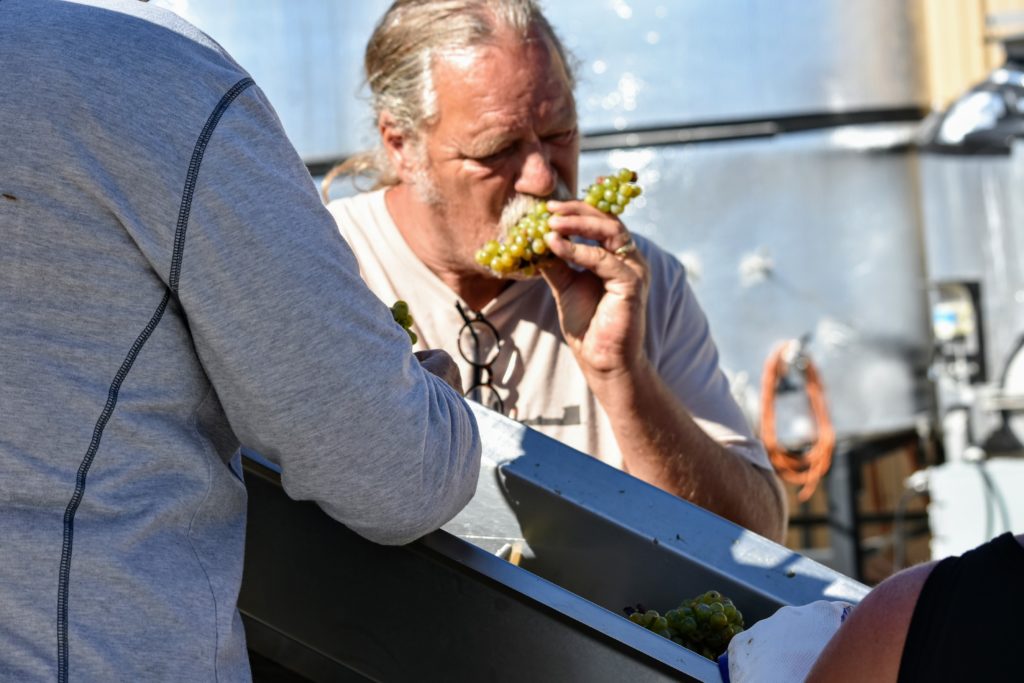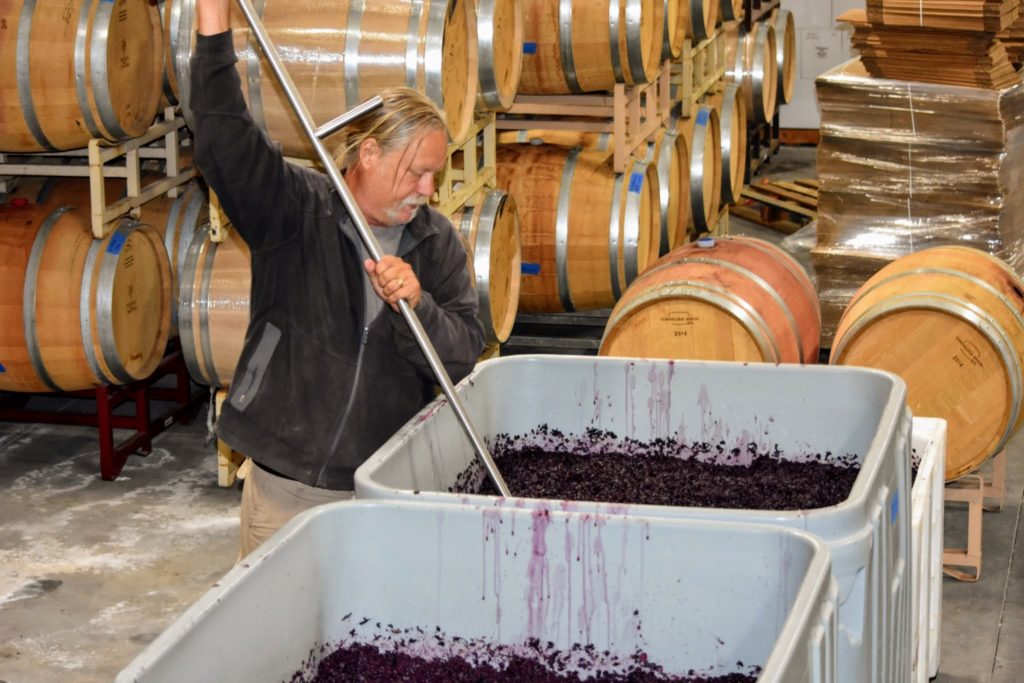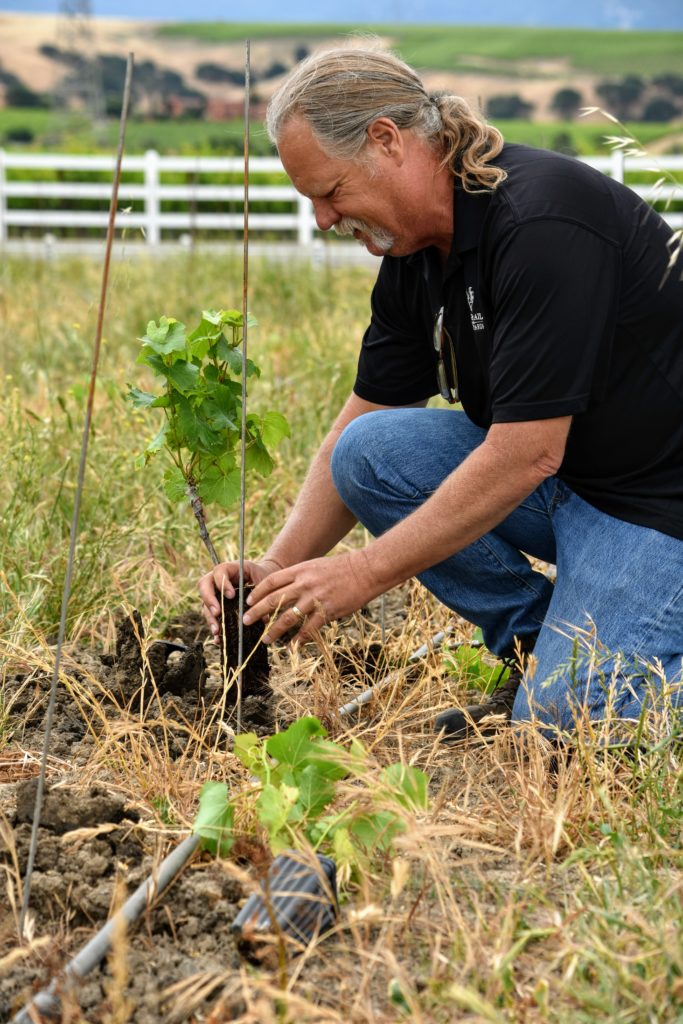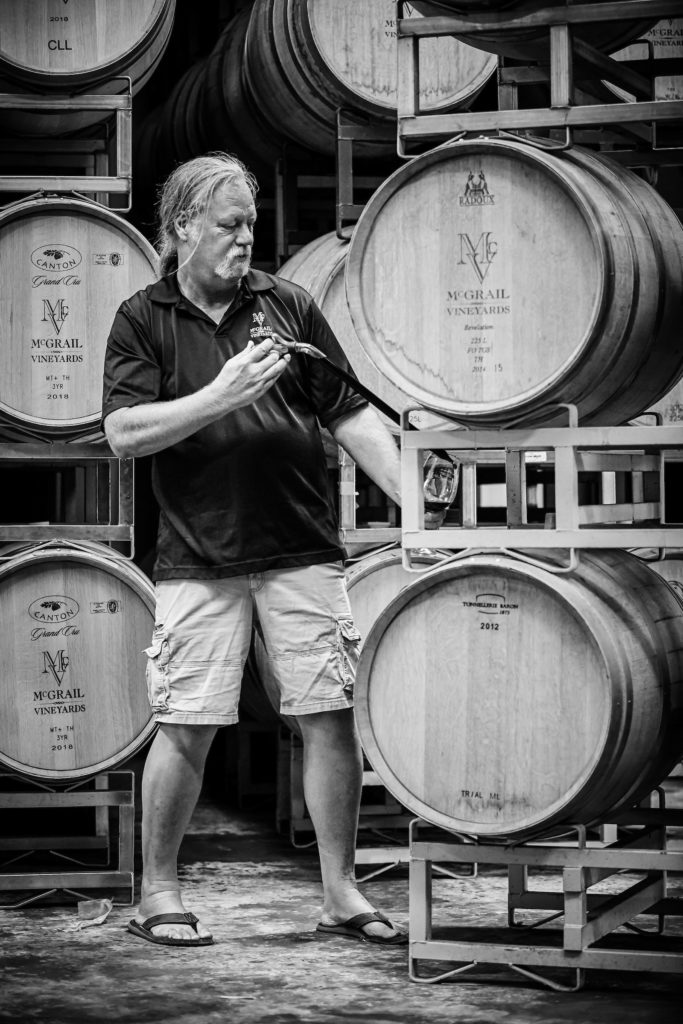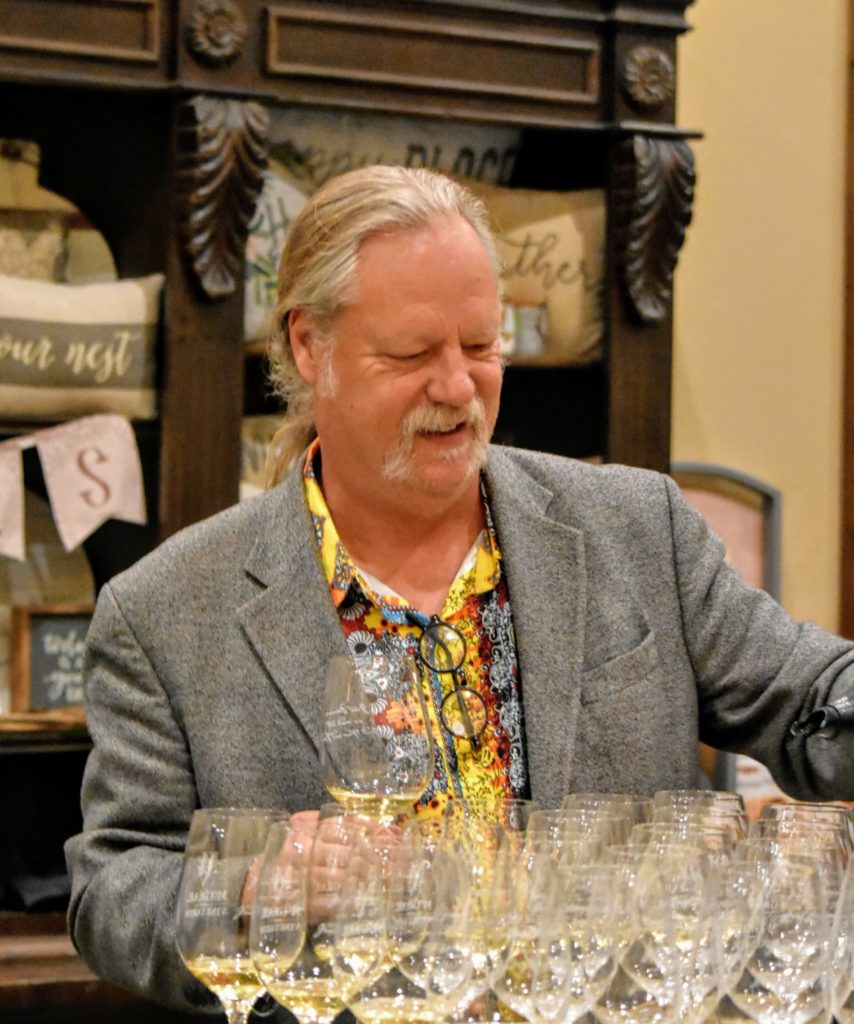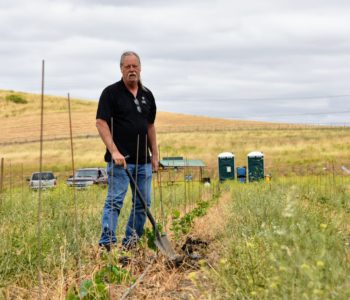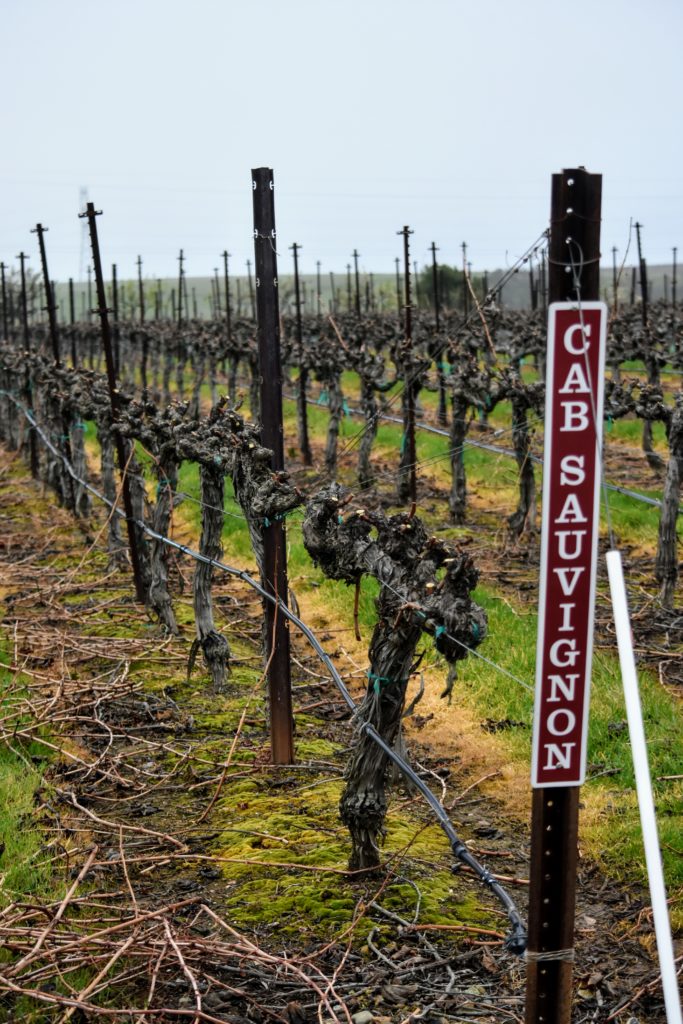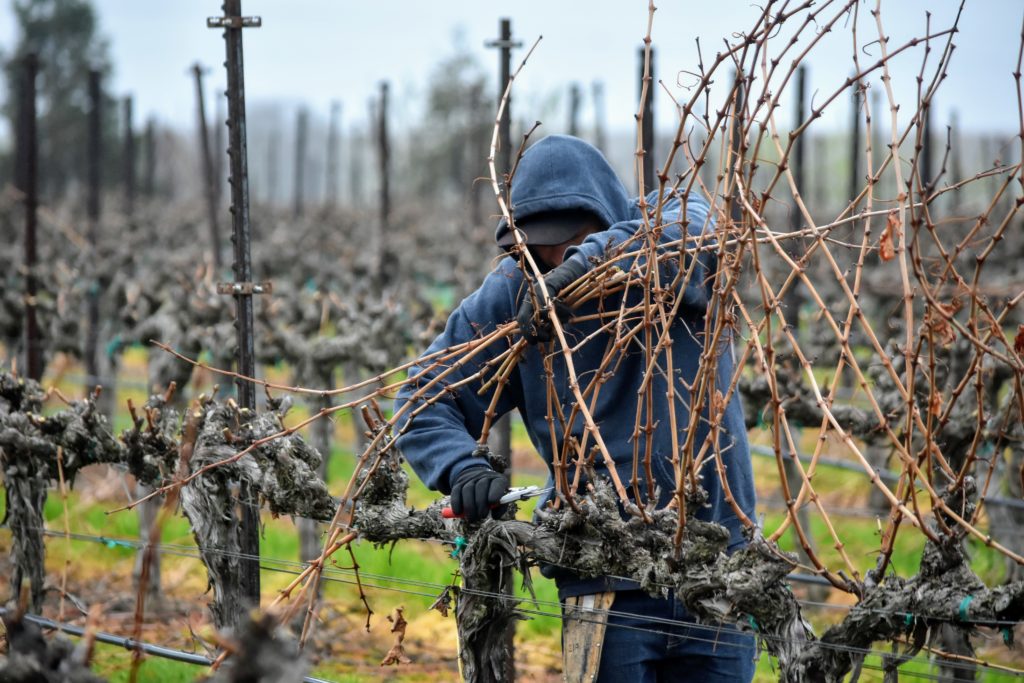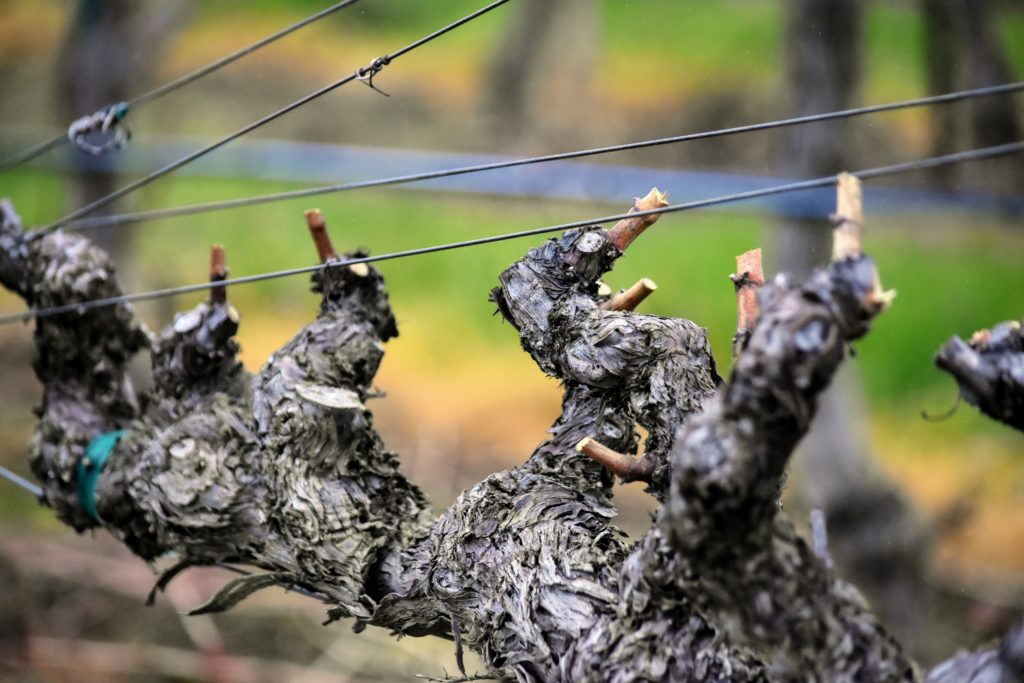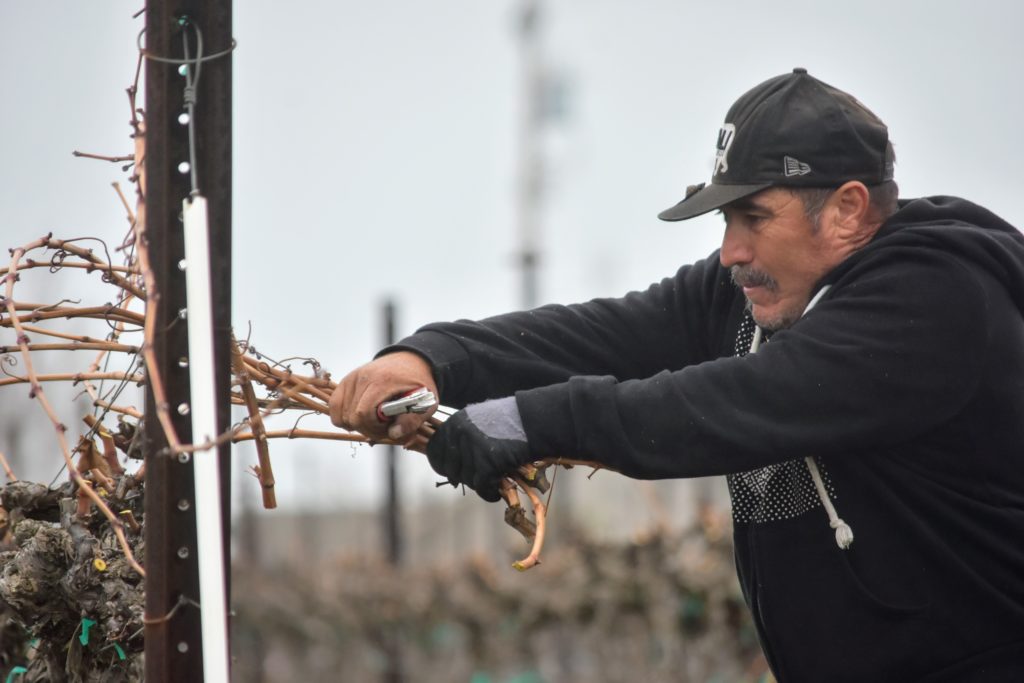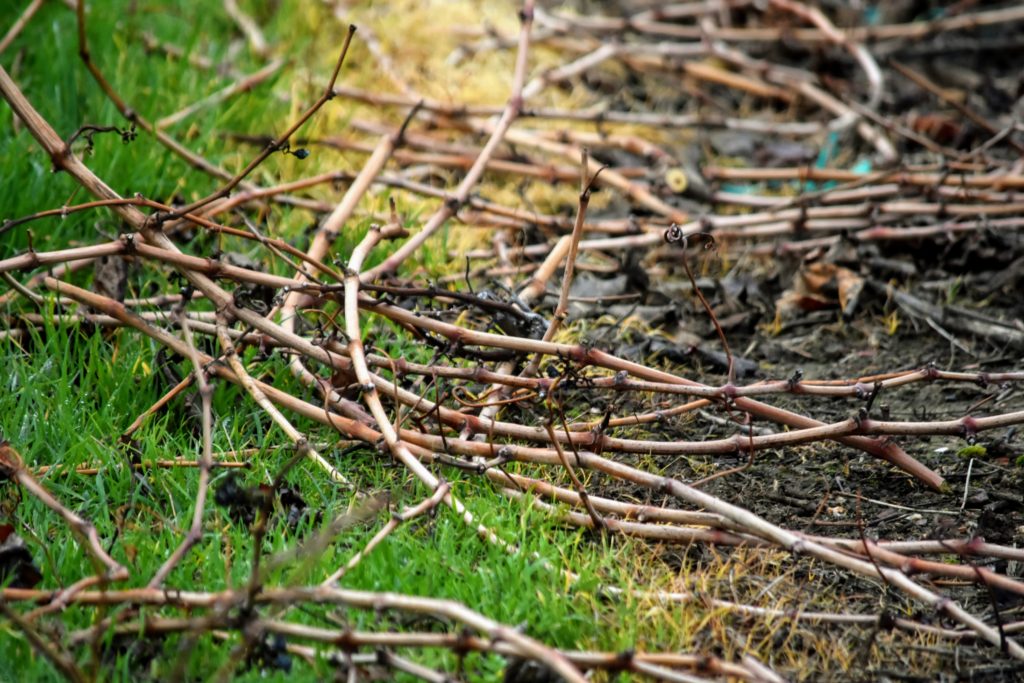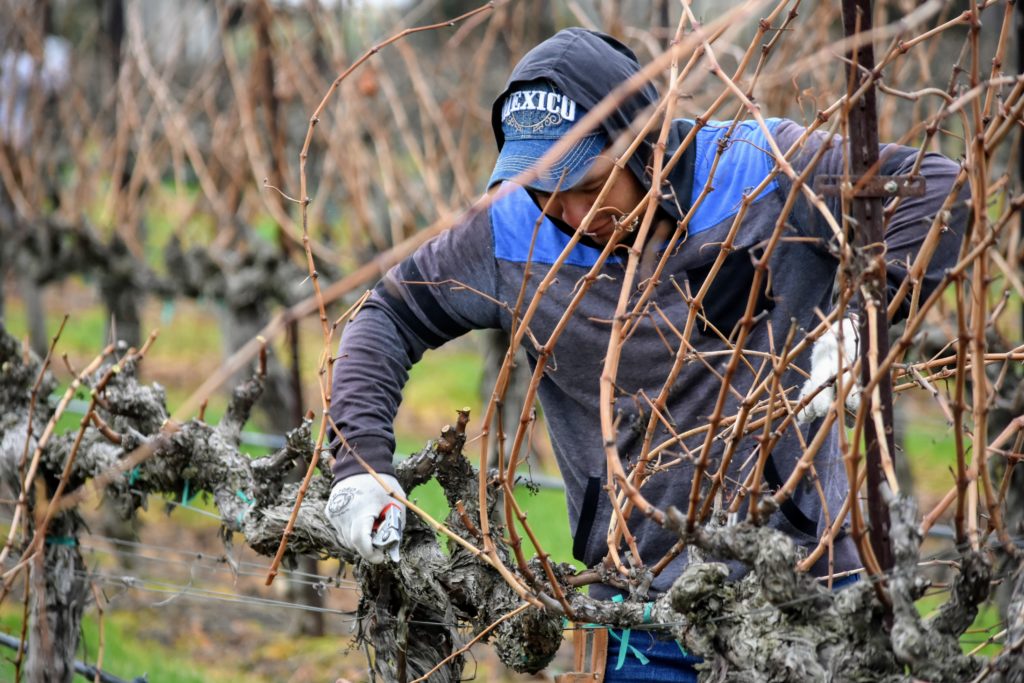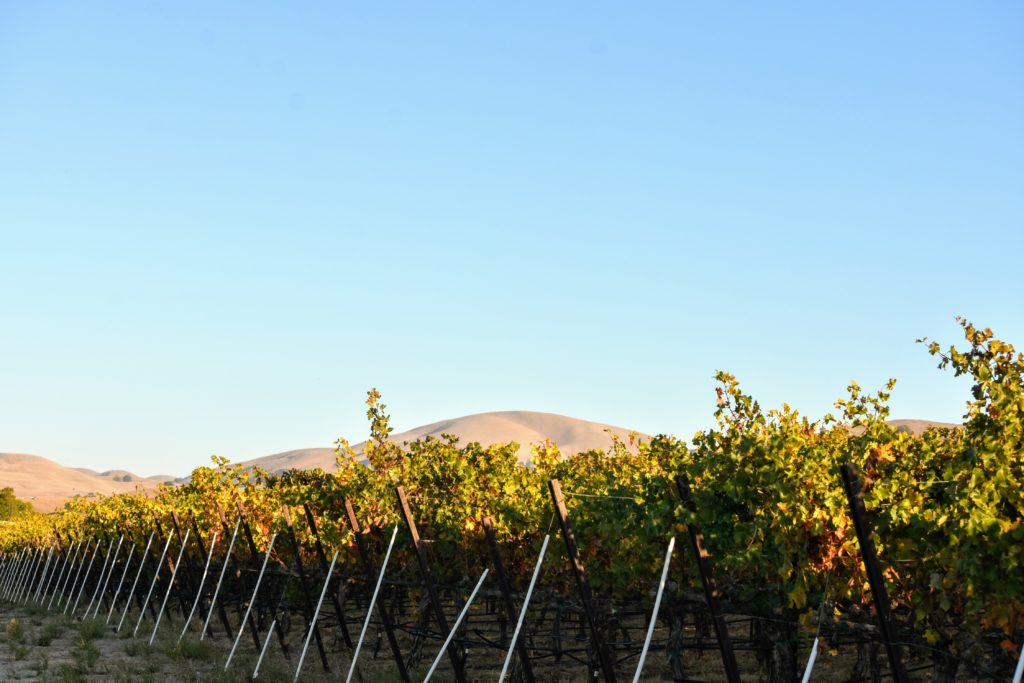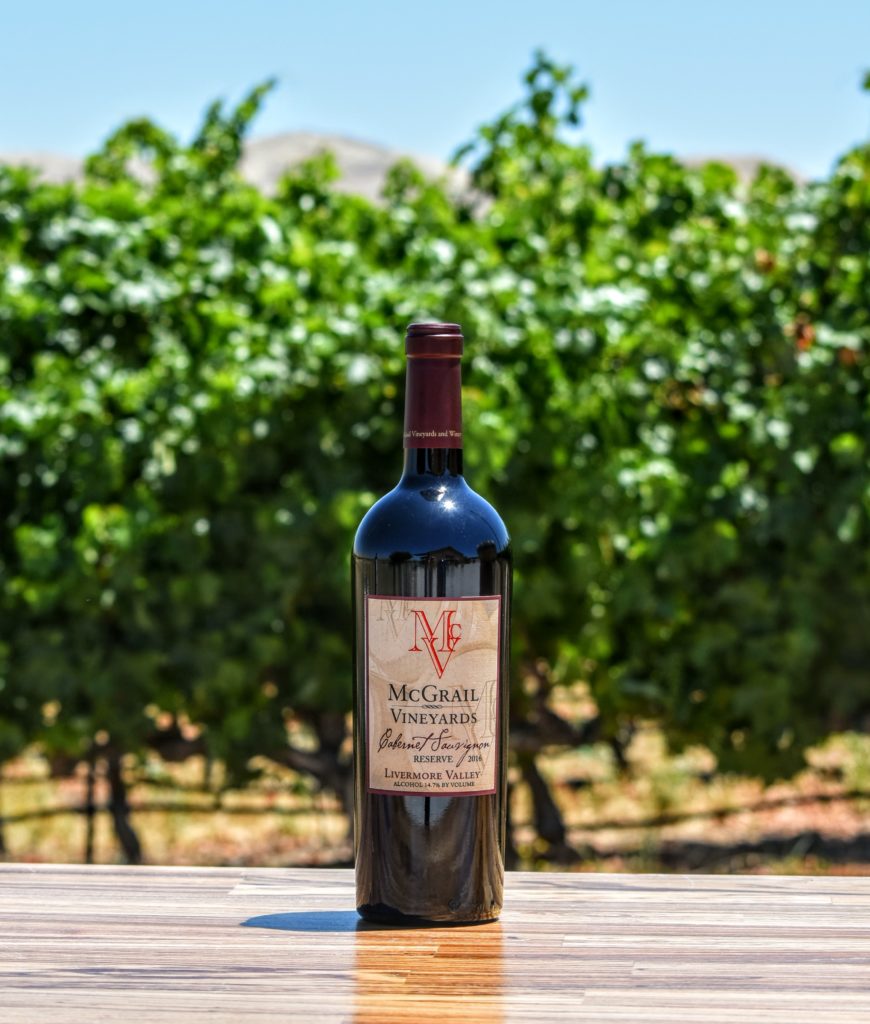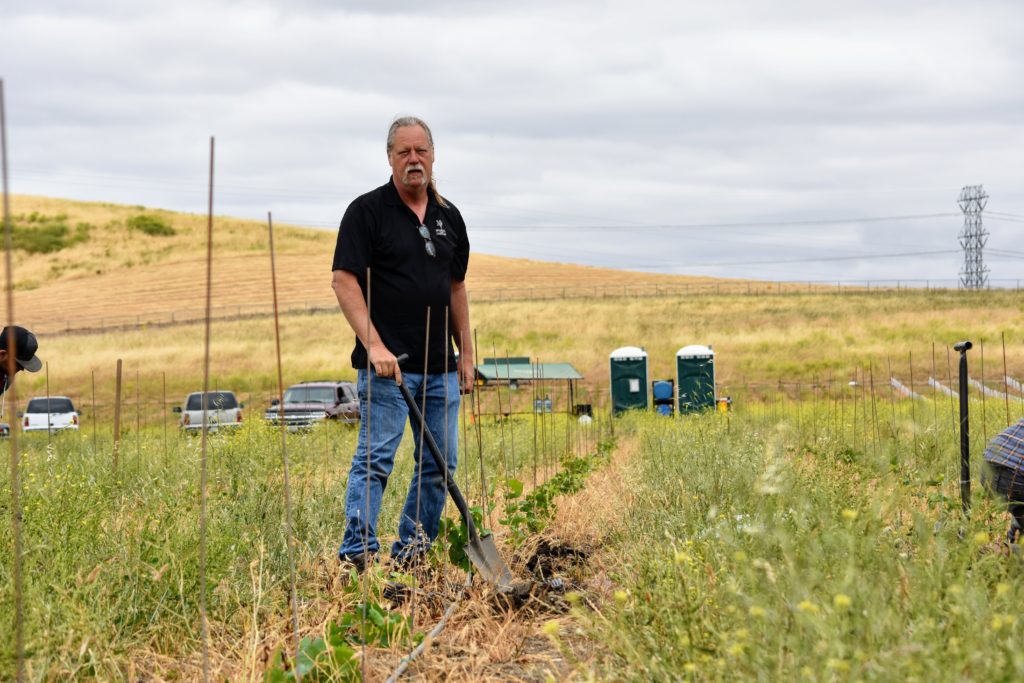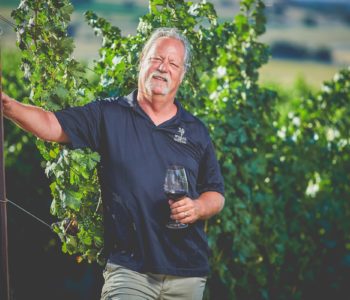 Wine Production
Wine Production
Qs and As with Our Winemaker, Mark Clarin
By Mark Clarin, Heather McGrail, and Laina Carter of McGrail Vineyards
If you’ve ever been to a McGrail Vineyards Release Party or Barrel Tasting Weekend at McGrail, you’ve likely spoken to or seen Mark Clarin. You’ve probably even seen him jamming downtown, at other wineries, or local breweries, in one of the various bands he belongs to. Mark, standing at approximately 6′ 4″, is known for rocking a horseshoe mustache, tie-dye tees, cargo shorts, flip flops, and a ponytail. He is nearly impossible to miss. His unmistakable style isn’t even the thing that makes him stand out the most; his wine is pretty extraordinary, too.
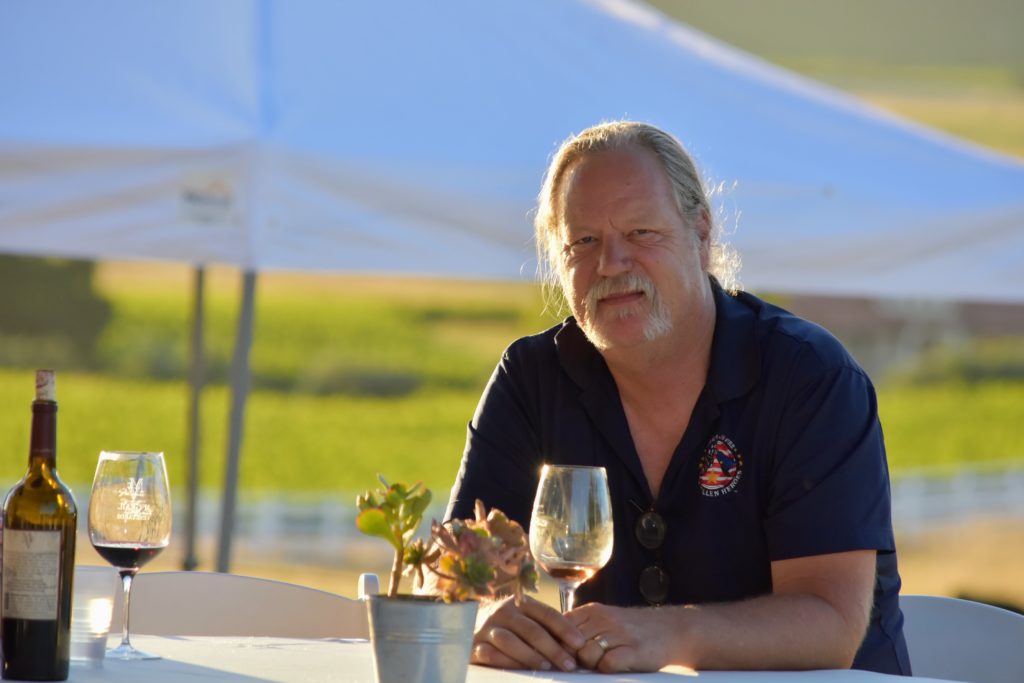
We asked Mark to answer some questions about himself, as well as about what he’s got going on in the vineyard now and what happens in the vineyard at McGrail in the early springtime. Allow us to introduce you to our winemaker, Mark Clarin, through some quick Qs and As. We hope you find his answers both humorous and valuable, as we did, and we hope it gives you a better understanding of why we love our talented, but goofy winemaker so much.
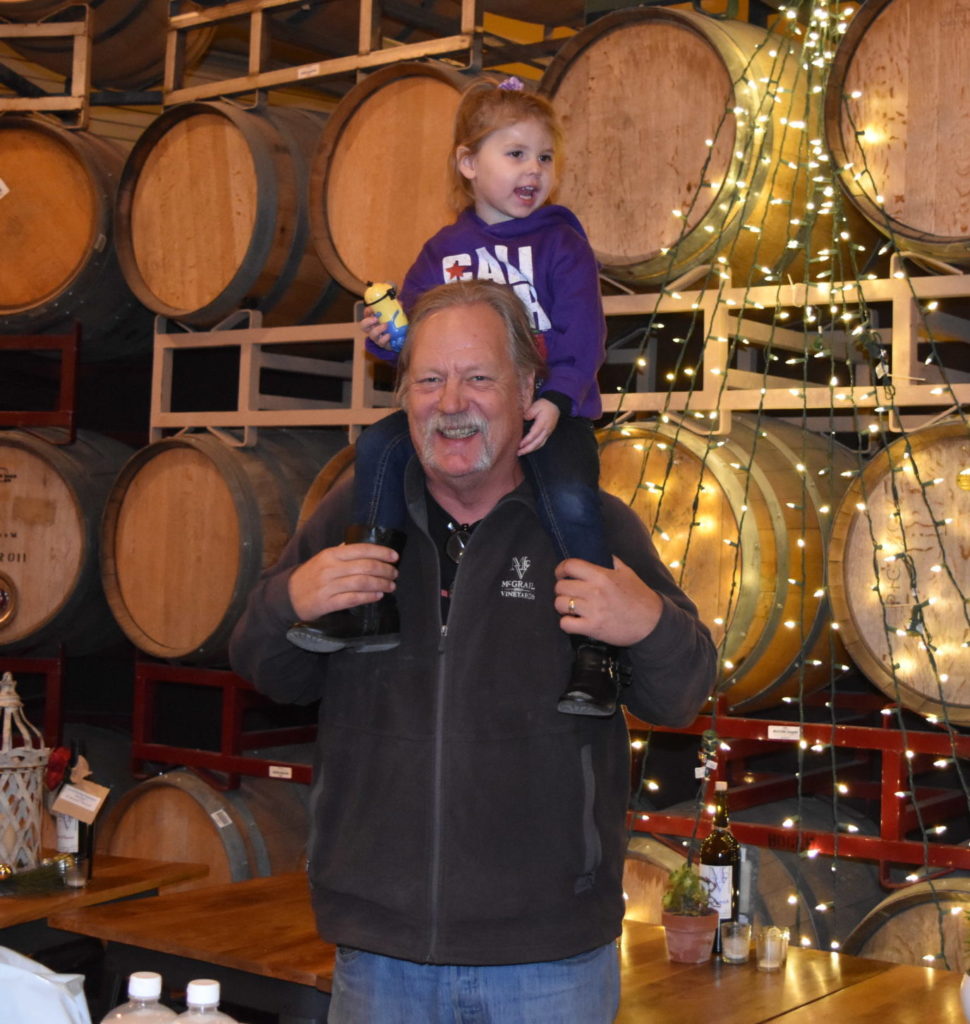
Question: Can you tell us just a little bit about yourself? Are you married? Do you have kids?
Answer: I am married with children–a boy and a girl. The girl has a girl, so I am a grandpa called Poppy.
Q: What is your background in the wine industry and how did you get into wine?
A: Winemaking found me! I got a job at a local winery when I was 20 years old. Prior to that, I was in construction. I grew up in Livermore and sort of fell into the business. I have always been drawn to hard work and art. I’m a musician as well, which has an interesting correlation to winemaking. In music, you have to learn when not to play. With winemaking, you have to be patient and learn when not to panic. Wine is a living thing and is constantly changing. Knowing what to do when is the key, which is similar to music.
Q: When did you first start at McGrail?
A: I started consulting in 2006, before crush.
Q: What is your favorite McGrail memory?
A: While giving a tour a few years ago, I had a customer ask me what I do all year, because I only have to work, like, two weeks per year. It was insulting, yet funny. I work at least four weeks a year. Sheesh.
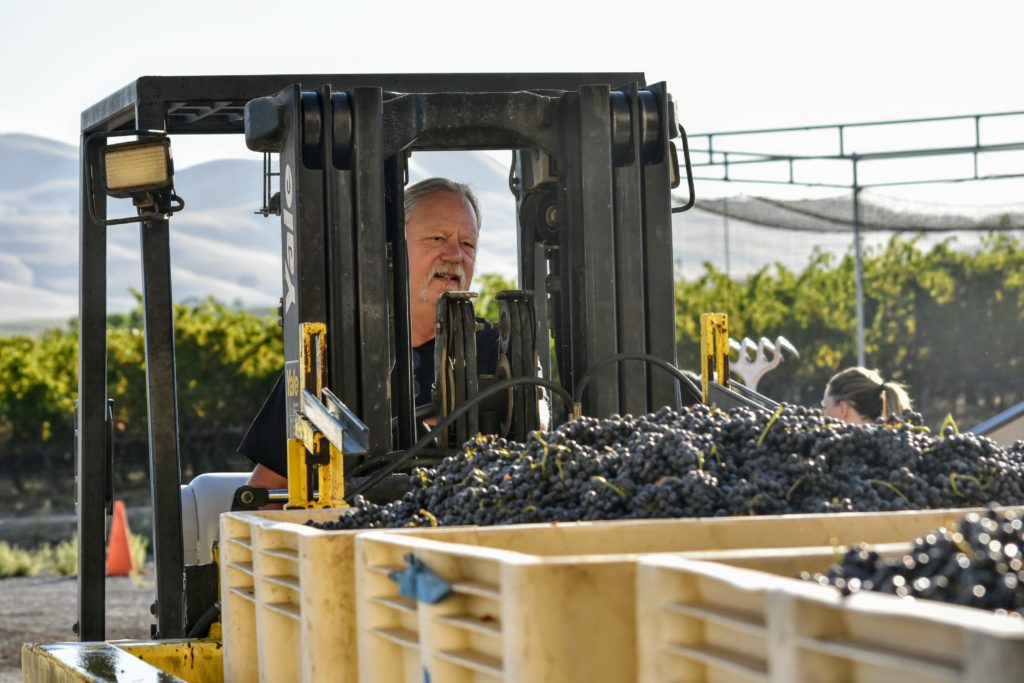
Q: What do you love most about working at McGrail Vineyards?
A: There are so many things to like. Number one is the team. When we first started producing wine, we made a plan to focus on making great wine. Our primary focus has been Cabernet Sauvignon, which is the king of wine in my mind. We have added a few varieties over the years, but our original goal remains the same–to make great wine.
The property is amazing with spectacular views which I get to visit every day. The estate vineyard is world class and we added the Lucky 8 vineyard in 2015. This affords us the unique opportunity to control our farming, in order to make the best wines possible. This circles back to the original plan.
I cannot forget our club members. We have the best club members, many of whom have been with us from the beginning. Without them I have no reason to make wine.
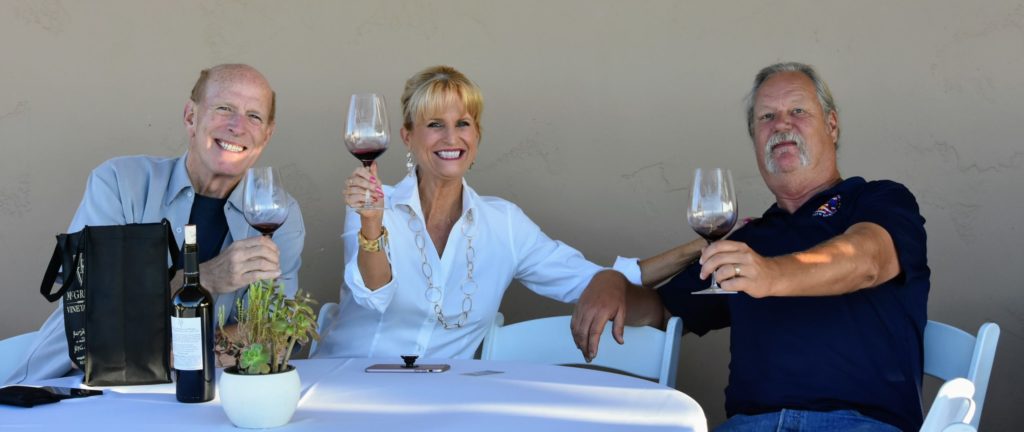
Q: What is the most interesting thing you’ve learned at McGrail so far?
A: How to install a giant flagpole on release Saturday with a bunch of high school kids.
Q: What is your favorite thing about working with Cabernet Sauvignon?
A: It is the king of wine. It grows exceptionally well here in the Livermore Valley. It is a small berry with thick skin and loose clusters that afford good air flow to minimize disease. Cabernet can take a little rain in the fall, as long as it doesn’t rain for more than a couple of days and we get wind to help dry things out. Other tighter cluster varieties don’t have that luxury. Cabernet is very consistent year to year for us. This is important, as we try to make sure the wines stay consistently great. I do like to drink it, too.
Q: What is going on in the vineyard during bud break and what does it signify to you as a winemaker?
A: During bud break, the dormant vines show the first green growth of the year. The buds unfurl small leaves that continue to grow (up to 1” per day!), as shoots, tendrils, and tiny pre-clusters develop. Bud break signifies a new vintage on the horizon and another opportunity to make some amazing wine. It is always an exciting and optimistic time to be in the vineyard, as it confirms the circle of life.
Q: Why is Lucky 8 usually the first vineyard to show bud break each year?
A: In 2016 we planted Chardonnay, Sauvignon Blanc, Cabernet Franc, and Cabernet Sauvignon. Since that time, our Chardonnay pushes buds first, followed by the Sauvignon Blanc. This is common throughout the valley. Our hillside Cabernet Sauvignon is usually the first of that variety to break bud. The Lucky 8 vineyard is a bit cooler than our estate vineyard, but Chardonnay is an early ripener, and therefore, an early bud breaker.
Q: What does a typical day in early spring look like for you?
A: Springtime is time for blending, which requires a fair amount of sampling and tasting. Topping off barrels is a continuous task throughout the year. It is also time to review the barrel order to take advantage of any early order opportunities. Keeping an eye on the vineyard as the buds begin to push and we begin a new year. I am fortunate that I am in the vineyard every day, if only for a brief moment. Usually, we have some sort of reason to get together and taste with our club members. We also bottle quite a bit of our production in the spring.
Q: What is your favorite winemaking memory?
A: Barrel fermenting Cabernet Sauvignon in a cave. Very labor intensive, but fun.
Q: If you could make wine anywhere else in the world, where would it be, and why?
A: Douro Valley, Portugal. The vineyards are grown on steep slopes made up of shale. Everything has to be done by hand in the vineyard. The people are very nice and the weather is similar to California. The soil comes through in the wine with lots of minerality. I have not been to the Rhone, which I could probably get used to quickly.
Q: What would you like people to know about you?
A: I am generally happy. I am very tolerant, but once you lose my respect you will never get it back.
Q: Would you care to share an embarrassing story about yourself?
A: While visiting another winery, a staff member named Joy handed me a glass of what I assumed was their Rose and asked my opinion. I responded with something like, “well, it doesn’t suck”. It turned out to be my Rose because she tricked me.
Q: What is your favorite movie and why?
A: The Wizard of Oz. I love the songwriting. Very clever.
Q: Is there anything people would be surprised to learn about you?
A: I sometimes talk in my sleep and I hear that I snore, but I haven’t caught myself yet.
Q: What is your favorite wine & food pairing?
A: Beef tenderloin and Cabernet Sauvignon.
Get a taste of Mark’s winemaking abilities yourself! Purchase McGrail wine here.
